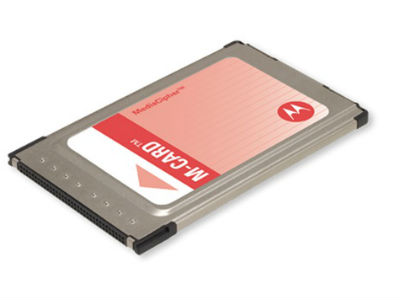FCC Abandons CableCARD, Navigation Devices Rule Review
Decision cites video marketplace changes and use of STBs, subscriber-owned devices
In the category of “forgotten but not gone,” the Federal Communications Commission Friday ended its decades-long attempt to regulate video navigation devices as part of the set-top box landscape. Its ruling also eliminated CableCARD support and reporting requirements by cable operators, recognizing that cable industry deployment and use of CableCARDs have been “disappointing.”
The unanimous decision – which included concurring support from Democratic Commissioners Jessica Rosenworcel and Geoffrey Starks – acknowledged that “the record in this proceeding has been fallow for four years and does not reflect important changes in the video programming marketplace and delivery of those services via applications that run on subscriber-owned devices.”
The ruling represents yet another FCC effort to remove from the books old regulations that are unused or unenforced. This one dates back to the late 1990s. The action specifically deals with the 2016 updated Notice of Proposed Rulemaking “Expanding Consumers’ Video Navigation Choices.”

In eliminating the CableCARD consumer support requirements, the FCC said that the rules “no longer serve a useful purpose following the D.C. Circuit Court’s 2013 decision in the “Echostar” case, which overturned a 2003 FCC order mandating that CableCARDs must be used by all multichannel video programming distributors (MVPDs) to assure security requirement for navigation devices. The decision cited arguments by programmers, MVPDs and the U.S. Copyright Office that the proposed rules would “undermine anti-piracy protections, reducing the incentives of parties to invest in new content, and would force MVPDs, programmers, and copyright holders to violate the copyright licensing contract obligations … leading to costly and time-consuming litigation.”
“Retention of the CableCARD support rules is not necessary to ensure that consumers have retail alternatives to leased set-top boxes,” the Commission said. “Consumer demand for retail CableCARD devices never developed as anticipated and such demand has declined steadily in recent years due to the growing popularity of MVPD applications.” The agency reminded cable operators that although CableCARD support rules are unnecessary, operators “are still required to provide separable security.”
An ACA Connects spokesman said the cable association “applauds the decision.”
“The marketplace has changed significantly over the last four years and even more so since the FCC first adopted set top box rules,” he said. “Consumers today are benefiting from the FCC’s decision not to adopt any new rules in this complex area. Less regulation here has proven to be what was needed most to clear the way for consumer choice.”
Multichannel Newsletter
The smarter way to stay on top of the multichannel video marketplace. Sign up below.

Recognizing Changes
For its part, the FCC acknowledged that “further Commission intervention in the navigation device marketplace is not necessary at this time.” It said that instituting any such regulations “could be substantial and detrimental to consumers, copyright holders, and MVPDs, and thus we are reluctant to adopt these additional regulations.” The agency noted that it had “substantial doubts” about whether the aging navigation devices are meaningful in the current multichannel video programming arena.
“Moreover, we note that since the record closed, the Government Accountability Office (GAO) concluded that the NPRM did not sufficiently analyze ‘the extent to which Internet-based providers affect consumer choice for video programming and what that change means for the importance of consumer choice for devices,’” the FCC added.
At the time it issued the rulemaking proposal in 2016, the FCC said it wanted “to let MVPD subscribers watch what they pay for wherever they want, however they want, and whenever they want, and pay less money to do so, making it as easy to buy an innovative means of accessing multichannel video programming (such as an app, smart TV, or set-top box) as it is to buy a cell phone or TV.”
In the intervening years, the market has changed. The FCC cited NCTA data showing that the nine largest MVPDs now support apps that are used to watch content on consumer-owned devices, such as smart TVs; tablets; streaming sticks and devices such as Apple TV, Roku, Google Chromecast, and Amazon Fire; smartphones; game consoles; and personal computers.
“Therefore, without Commission intervention, many MVPD subscribers can watch the services that they pay for wherever, however, and whenever they want on an array of innovative devices via many different applications,” the FCC said. “We are concerned that adopting the proposals set forth in the NPRM would risk stifling innovation and deterring investment in this sector and, thus, could ultimately detract from Congress’s overarching goal for a fully competitive market for navigation devices.”
Contributor Gary Arlen is known for his insights into the convergence of media, telecom, content and technology. Gary was founder/editor/publisher of Interactivity Report, TeleServices Report and other influential newsletters; he was the longtime “curmudgeon” columnist for Multichannel News as well as a regular contributor to AdMap, Washington Technology and Telecommunications Reports. He writes regularly about trends and media/marketing for the Consumer Technology Association's i3 magazine plus several blogs. Gary has taught media-focused courses on the adjunct faculties at George Mason University and American University and has guest-lectured at MIT, Harvard, UCLA, University of Southern California and Northwestern University and at countless media, marketing and technology industry events. As President of Arlen Communications LLC, he has provided analyses about the development of applications and services for entertainment, marketing and e-commerce.

